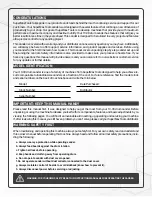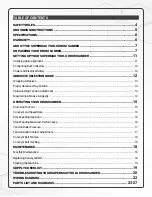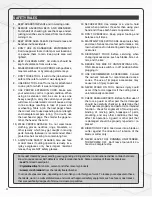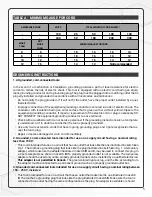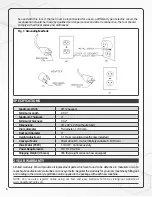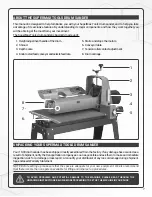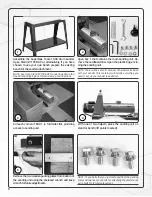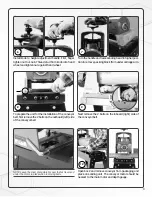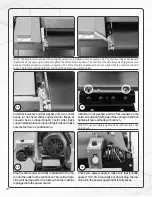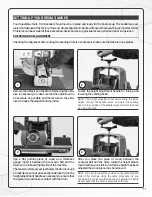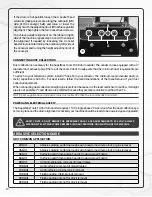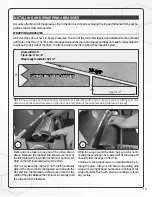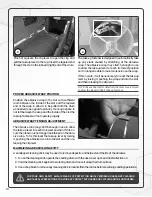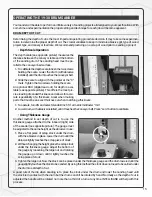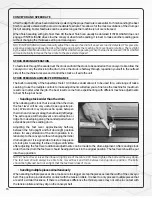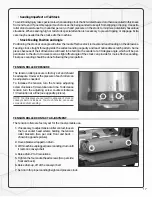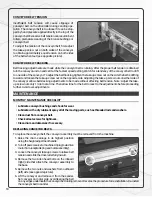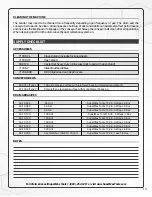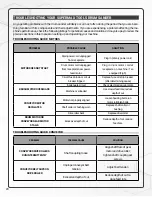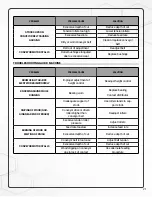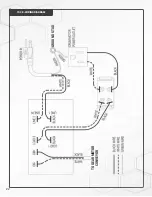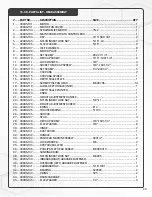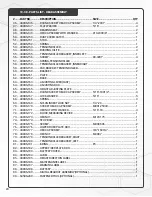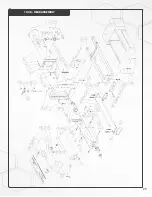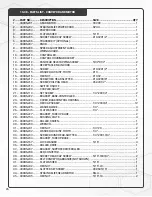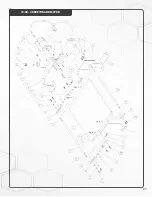
15
OPERATING THE 19-38 DRUM SANDER
Your sander will be able to perform an infinite variety of sanding projects all designed to your specifications. With
some time and experimentation the proper setting and technique for each job will become apparent.
DRUM DEPTH OF CUT
Determining the depth of cut is the most important operating procedure decision. It may take some experimen
-
tation to determine the proper depth of cut. The crucial variables to keep in mind are abrasive grit, type of wood,
project type, and conveyor feed rate. We recommend practicing on a scrap of wood prior to sanding a project.
•
Depth Scale Operation
The depth scale (see opposite picture) measures the
distance between the conveyor table and the bottom
of the sanding drum. The sanding head must be pa-
rallel to the conveyor bed surface.
1.
To calibrate the depth scale, loosen the two screws
holding the scale. Lower the drum (with abrasive
installed) until the drum touches the conveyor belt.
2.
Slide the scale to align with the pointer at the “0”
mark. Tighten the two screws holding the scale.
An optional DRO (digital read out) for depth is avai-
lable (see opposite picture). This offers the most pre-
cise reading of sanded thickness and allows for accu-
rate repeatability of a thickness. Great when making
parts that must be an exact thickness or when matching a thickness.
1.
To operate, turn ON and select standard inch “in” or metric millimeter “mm”.
2.
Lower drum, with abrasive installed, until it touches the conveyor belt. Press “zero” button to calibrate.
•
Using Thickness Gauge
Another method to set depth of cut is to use the
thickness gauge attached to the inboard (right) side
of the sander (see opposite picture). The gauge must
be adjusted to the same height as the abrasive in use.
1.
Place a flat piece of scrap stock under the drum
with the abrasive in place. Lower the durm until the
abrasive lightly touches the scrap piece of stock.
2.
Without changing the height, place the scrap stock
under the thickness gauge. Adjust the bottom of
the gauge by loosening the large nut and rotating
the gauge up or down until it lightly touches the
scrap piece of stock.
3.
Tighten the large nut. Now the stock can be placed under the thickness gauge and the drum lowered until the
gauge lightly touches the stock to be sanded. By using this method the stock does not need to be carried under
the drum to set depth of cut.
A good rule of thumb when sanding is to place the stock under the drum and lower the sanding head until
the stock is in contact with the drum but the drum can still be rotated by hand. Normally as the depth of cut is
adjusted the handle will be rotated no more than a third of a turn at any time. INTELLISAND will help with this
process.


